|
Alright students, so here is the challenge. I have around 20 posts about my time in #theotherGeorgia on this blog. They don’t all fit on this page, so you will have to scroll down and click on “previous” at the bottom left of this page to see earlier posts (notice the picture at the bottom of this post). I have mentioned many different things about Georgian schools in different posts. Using ONLY these posts as your source of information (not Google), create a Venn Diagram, like the one in the image below, and compare/contrast American and Georgian schools. The first 3 students who gives a correct diagram to me (either write it on paper or create in Google Draw and email it to me) will receive a Georgian prize. You must include 3 differences and 3 similarities. No weak answers will be accepted. Weak answers include things like, “they have teachers and students,” or “they have a building.” Your comparisons must be thoughtful and have been mentioned on my blog.
I’ll be at school Tuesday, so you can give it to me then or email it anytime. I’ll bring the prizes with me, just in case we have winners by then.
0 Comments
You guys are sending great questions and comments so far. Thank you! Below are responses to a few of them and a small trivia question worth some Georgian candy (no Mr. Churchward you're not eligible to win - only students). I will answer more later. 1. What kind of holidays do they have there? Like us, they have lots of holidays. Some are religious, like Easter, which is celebrated on May here this year, and St. Andrew’s Day on May 12 (he was supposedly the first to bring the message of Christianity here). As for national non-religious holidays, they have two independence days. One in May celebrating when they became an independent country (which only lasted for three years) in 1918. The second is in April celebrating their latest independence after the Soviet Union ended in 1991. 2. Have you had to speak their language so that they could understand you? I’ve learned a few words and phrases to get me by. Some people speak English well, but most only have a very basic English vocabulary. When I spent six days in Batumi, on the Black Sea near the Turkish border, I was able to speak a lot of Turkish, which was fun. In schools, the secondary students were able to understand most of what we were saying. However, the English teacher had to translate for us in the younger classes. 3. How many grades are there in the school? And what are they called? Georgian schools go from 1st to 12th grades. The Georgian word for school is სკოლა or skola. The only big test that students take, like the STAAr test in Texas, is at teh end of their 12th grade year. But everything rides on that one test. If you do poorly, you have no chance of getting into a good university. 4. Have you asked them to write an essay on their daily schedule? If so, about how many? Did you receive anything from them? I did ask them to write about their typical school day. And many did. I haven’t counted them all, but I gave them 64 from Kerr and I think based on the size of the stack, there is at least that many from them. I will pass them out to those Kerr students who wrote an appropriate narrative. 5. The McDonald’s is really cool. Why are there carrots in a cup? It is really cool. The carrots were just decoration and not real. I had to look closely because they were very life-like. This McDonald’s tried to give off a healthy, organic-vibe with its decor and signs. I think it worked. It didn’t feel like I was in an American fast food joint. 6. What does it mean by Orthodox church? There are several groups that fall under the Christian religion. The three major groups are Catholic, Protestant and Orthodox. When we were studying Europe, we talked about the Protestant Reformation and a certain person who lead a protest movement against the pope and the Catholic church. This started a new “type” or group in Christianity called Protestant (Baptists, Methodists, etc… are all in this group). For a piece of Georgian candy, click on the link below and send me the name of this certain person who started the Protestant Reformation (no Googling, you should know this). As for Orthodox, this is another type of Christianity that is more common in Georgia, Greece, Russia, and other European countries. Go back to my post on Georgian Orthodox to get more details by scrolling down two posts. 7. Does their classroom look like ours? I visited two schools and the classrooms didn’t look like ours. They were much older and had one chalk board. The desks were usually put in rows. Not much covered the walls. They did have coat racks on the walls, since students stay in the same class all day and it gets really cold here. Some other American teachers visited schools that were more similar to ours. Once I get back to the states, I’ll post more videos from classroom visits so that you can see for yourself. For now check out an earlier post about my first visit to a school by clicking here.and watch the short video below. If you have any questions or comments or want to answer the question about the Protestant Reformation above, be sure and click on this link. I will try to get back to you. You guys are sending great questions and comments so far. Thank you! Below are responses to a few of them. I will answer more later. 1. Why are you telling people about our culture? I am a part of a program called Teachers for Global Classrooms. It is paid for by the US government so that teachers in America can better prepare students for our globalized world. Part of the program is American teachers traveling to other countries to study education there and to help teach about American culture and educational practices. It has been a lot of fun and I feel very fortunate to be a part of this program. 2. How does it feel to get to go to Georgia? It feels exciting to be in Georgia. I love to go to new places and meet new people. I like learning about how other people live, eat, and think. Georgia has not disappointed. It's a beautiful country with very kind, friendly people. 3. How was the McDonald's? Was it cool? The McDonald’s was really cool. The building looks like a spaceship. I didn’t like the food as much as the Georgian food I’ve been eating at other restaurants and people’s houses though. 4. What does their money look like there? What is their culture like? What is their favorite sport? And what do they like to do in their free time? The currency of Georgia is the Lari. Below is a picture. The other picture is of Euros which is the currency of Germany, where I went first, and of many other European countries. As for culture, Georgians love to have big feasts called supras and invite their friends, family, and neighbors. They fix much more food than can be eaten. They love music and will bust out into song at the table often. Dancing is important here as well and many people know traditional dances like ones you can find in the YouTube video below. If you aren't able to watch this video at school, check it out at home. It's impressive. Georgians like soccer, but the biggest sport is rugby. Their national team made it to the last Rugby World Cup. In their free time, Georgian students hang out with friends, play video games, soccer, basketball, and rugby. The average student has more homework than US students, around 2 hours nearly every night. Remember, if you have any questions or comments, be sure and click on this link. I will try to get back to you. The story goes that in the first century (2000 years ago), Jesus’ disciples Andrew and Matthias (the one who replaced Judas) traveled to #theotherGeorgia to spread Christianity. It's believed that they had modest success. But in the early 4th century (300s), Nino, a woman from central Turkey came and convinced the king. From that time, most Georgians have been Orthodox Christians. Georgian Orthodox is like Eastern Orthodox in Russia and Greece. They put a special emphasis on Mary, the mother of Jesus, and many other people who are talked about in the Bible or church history, called saints.
Filling Orthodox churches are icons, or paintings of Jesus or saints. People will often light a candle in front of and pray to the icon. For a painting to become an icon, a patriarch or bishop must perform a special blessing over it. Many people have them in their homes as well. Throughout history, #theotherGeorgia has been conquered by people of other religions, but as a whole, they never left their orthodox faith. Even when the communist Soviet Union ruled Georgia and it was illegal to practice your religion, many Georgians did so in secret. Our host teacher, Nino, named for St. Nino, is very religious and has done a great job helping us better understand the Orthodox church. Students, if you have any questions or comments, be sure and click on this link. I will try to get back to you. On our last day at St. Andrew the First Called School in Batumi, we taught 2nd, 7th, 10th, and 12th grades. Like the days before, it was a hectic day of moving from class to class amidst students running through the hallways yelling at each other (totally normal in school here - I'll upload a video when I return to the states). In Georgian schools, students stay in the same class and teachers move from room to room.
For the 10th and 12th graders, we decided to compare and contrast the senior year in American and Georgian schools. We talked about Homecoming, Prom, Senior Pranks, college applications, ACT/SAT, graduation ceremonies, going off to college, etc… They thought the senior prank was the greatest thing ever and talked about what they will be doing. We apologized to our host teacher for that one. We shared about our schools and life in America with the 7th graders. Many of them had participated in our class project of trading personal narratives. They were excited to get narratives written by Kerr students and for me to take theirs back to my students. For the second graders, we played games common in America. We started with Simon says, which is great for reinforcing vocabulary. Then, we played Heads Up 7-Up. This was my favorite classroom game from elementary school. Like kids everywhere, there was a lot of peeking going on. They loved it. Our final game was the classic Rock, Paper, Scissors. They have a game similar to this, so it was a big hit as well. My son, Nate, is in second grade so I showed pictures of him and talked about what his life is like. How he likes soccer and basketball, reads books, plays video games, has the greatest dad in the world; you know, that kind of stuff. They were so excited to have us in their class. It makes me hope that my children and students have the opportunity to have class visits from visitors from other countries. On Monday, we were asked to teach about American holidays. We chose Thanksgiving. Since this is almost exclusively an American holiday (you’re welcome, Canada), we thought that students in #theotherGeorgia wouldn’t have heard of it. We were right.
After explaining the history behind it (with the help of my family’s favorite, Charlie Brown) and how Americans celebrate it today, we had the students make the classic hand-turkey. And like we all did as a young child, students wrote what they were thankful for on all the “feathers.” It was a lot of fun and the students got into it. We ended with having them write an explanation of Thanksgiving in 10 - 15 words. Some of the students were very sweet and wrote Mr. Blan and Mr. Perez on their turkeys. I hope that foreign teachers that come to the States are as warmly received as we have been here. Students, if you have any questions or comments, be sure and click on this link. I will try to get back to you. In preparing for my trip to #theotherGeorgia, I came across a new twist on a familiar site. McDonald’s. The Mickey D's here in Batumi made the top 10 for innovative buildings worldwide a few years ago. It doesn’t look, smell, or taste like the ones back home. But unfortunately, it didn’t taste any better here, just different. One similarity was actually the menu. It was pretty much the same, just in Georgian. I normally wouldn’t eat American food while traveling abroad, but I promised my students I would. The spaceship-like design is really cool. When you walk in, you see the counter and place your order. When you get your food you can go up the stairs on either side. There are some tables and chairs on small terraces along the way up until you reach the next floor. This is where most tables are, as well as the birthday playroom. There is also an outdoor seating area near a patch of green space built into the outside facade. In the spring and summer time, they grow flowers. Due to it being freezing (literally) and raining or snowing all day, I didn’t get many pictures from outside. Check it out. Throughout #theotherGeorgia, there are Teacher Houses that provide training and professional development for teachers in the area. Saturday we were asked to provide a training there. Around 20 teachers (and two news crews) showed up. Mario spoke about an integrated approach to teaching new English speakers at his Newcomers school outside of Chicago. I led a session about simple ways to enhance your instruction. The teachers were eager to participate and ask questions. Some teachers had tutoring sessions with students but those who stayed to the end received Kerr shirts that our school sent with me. Like teachers in America they were very excited to receive swag. Friday night we were invited to a math teacher’s house for dinner. Natalia and Roma, her husband, hosted us in true Georgian fashion. The special meal in which friends and family are invited is called the Supra. There was far more food than five people could eat. Lots of laughter, storytelling, and toasts. Georgians have a very formal way of toasting at meals. There is only one person, called the Tamada, who can offer them. It is considered rude to interrupt or add to the Tamada’s toast. In the four hours or so that the meal lasted, there were 10 - 12 toasts. The topics toasted to included friendship, our homelands, our parents, children, world peace, loved ones who have died, each other, and our host teacher, Nino, for bringing us to their house. I’m sure I’m leaving some out.
It was a fantastic time. The Georgian custom of hospitality to guests is something I wish American culture was known for. They definitely offer their best, and all they have, to guests. At the end of the night, Mario and I gave them gifts from Chicago and Texas. The gifts seem so small after all the hospitality they showed us. I will post pictures of the food and our new friends when I can. I'm having trouble with the card. #frustated Friday, Mario and I spent all day at St. Andrew the First Called School in Batumi. We briefly toured the school and then jumped right into teaching. We started off teaching about America and our schools to the 5th grade class and continued on to 4th, 7th, and 8th grades. It was a great time. The students had many questions. The two parts of the presentation that got the students talking the most were the picture of Zaza Pachulia, the Dallas Maverick who is from #theotherGeorgia, and the video that showed a typical day at our school. In particular they loved seeing students eating lunch. Especially the pizza.They were also amazed at the amount of technology used in our schools. One technology almost all Georgian students have is a cell phone. When each lesson was over, the students rushed over to get selfies taken with us. Obviously, the selfie is a teenage phenomenon that crosses all borders. Thankfully I didn’t see any duck faces. When we were finally able to get out of the classroom, we went to another class to either teach or observe. At the end of the school day, we talked about American schools for the teachers of the school. It was a great way to start our time in Batumi schools. |
AuthorStephen Blan teaches US History at Fort Worth Country Day in Fort Worth, TX and is a 2015 Teachers for Global Classrooms Fellow. Archives
September 2017
Categories
All
|


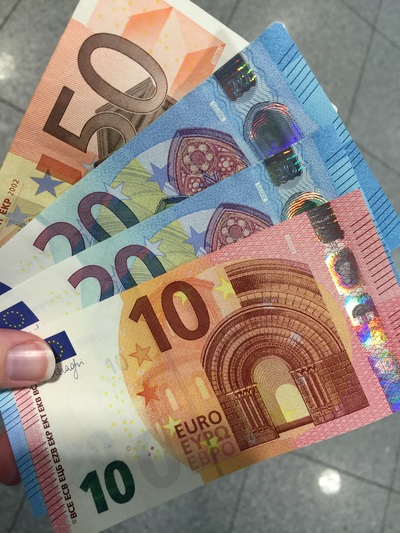


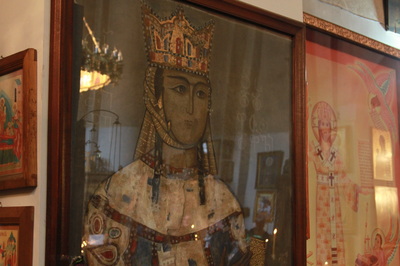
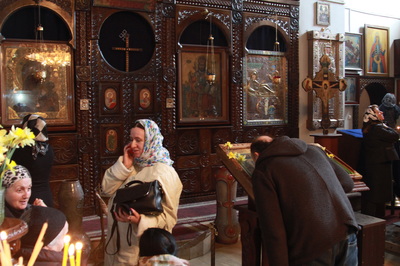


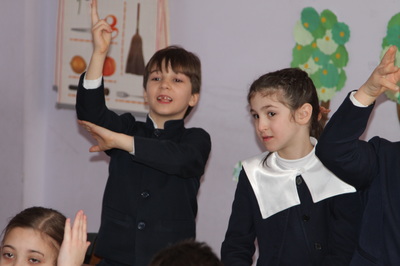
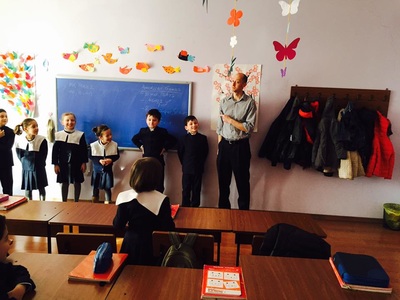
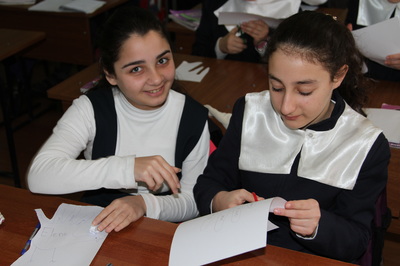

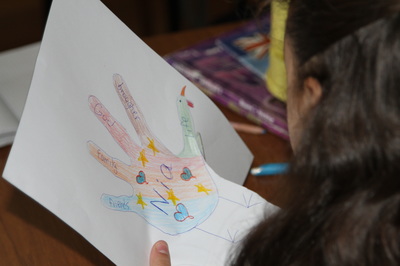
 RSS Feed
RSS Feed
